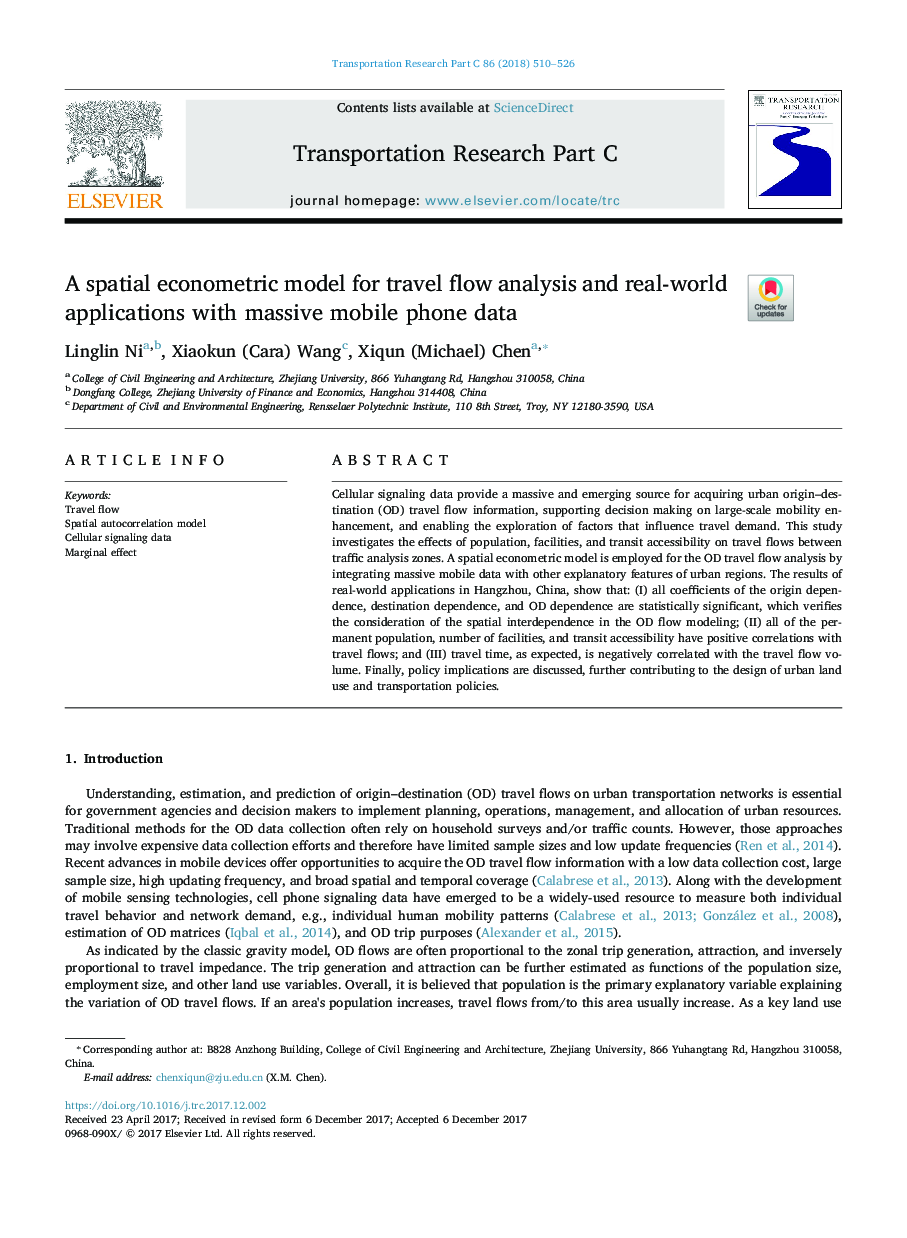| Article ID | Journal | Published Year | Pages | File Type |
|---|---|---|---|---|
| 6936268 | Transportation Research Part C: Emerging Technologies | 2018 | 17 Pages |
Abstract
Cellular signaling data provide a massive and emerging source for acquiring urban origin-destination (OD) travel flow information, supporting decision making on large-scale mobility enhancement, and enabling the exploration of factors that influence travel demand. This study investigates the effects of population, facilities, and transit accessibility on travel flows between traffic analysis zones. A spatial econometric model is employed for the OD travel flow analysis by integrating massive mobile data with other explanatory features of urban regions. The results of real-world applications in Hangzhou, China, show that: (I) all coefficients of the origin dependence, destination dependence, and OD dependence are statistically significant, which verifies the consideration of the spatial interdependence in the OD flow modeling; (II) all of the permanent population, number of facilities, and transit accessibility have positive correlations with travel flows; and (III) travel time, as expected, is negatively correlated with the travel flow volume. Finally, policy implications are discussed, further contributing to the design of urban land use and transportation policies.
Keywords
Related Topics
Physical Sciences and Engineering
Computer Science
Computer Science Applications
Authors
Linglin Ni, Xiaokun (Cara) Wang, Xiqun (Michael) Chen,
